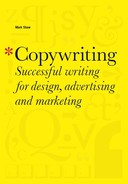Case Study: Pret A Manger
Pret A Manger is one of the UK’s retail success stories. Selling a wide range of the freshest sandwiches and lunchtime foods, the company prefers to use innovative customer communications rather than slick advertising and PR. Everything in a Pret store carries a message, from the coffee cups to the napkins, from the packaging to the posters on the walls. This creates a strong and unique personality, so what was their original approach, and how do they do it?

reflecting the attitude that makes the company so dynamic
The messages mirror the culture that pervades every aspect of Pret’s business. It is a relaxed and informal working environment, built on the individual qualities of everyone who works there, and the internal communications are as quirky as the customer messages.
Pret doesn’t have a press or PR office and only uses an external creative agency to help manage the huge workload of writing. The stimulating and informative messages that adorn every Pret item are written and managed by three people internally: the company’s founder, commercial director, and head of communications, and even they don’t follow a rule book.
The Pret tone of voice is based on the personality and ideas of the founder, Julian Metcalfe. It bursts with life, but is never preaching or bragging, and
is definitely not “corporate” or “spin.” Nothing deviates from the message about Pret’s natural food that is always “just made.” Julian himself never uses the word “copy” – to him it’s just messages, and every message is designed to make you feel good about Pret.
The Approach:
keeping the copy as fresh as the sandwiches
There is an instinctive approach to creativity and freshness, and an openness that many others could learn from. They have published all of their recipes so that customers can make Pret sandwiches themselves, and they have made public their commitment to not air-freight their ingredients, except in the case of an emergency (or where fresh basil leaves are concerned).
The writers say it is difficult to explain what is on- and off-brand when writing for Pret, but they all know what works and what doesn’t – they each have a highly attuned eye for language, both their own and that of the competitors. If a competitor could say it, Pret won’t. Yet a style of copy that works for a Pret soup board won’t work for a Pret coffee board, simply because they are completely different messages.
The closest they get to an explanation is that their language “has charm, wit, and humility, but
is never preaching,” and that, while it is fun, “it is a wry smile not a belly laugh.” They have also described it as “flippancy, underpinned by serious knowledge.” For example, their “Eat with your head” campaign promotes ten very sensible points about healthy eating.
By maintaining such a simple and straightforward process to writing messages, the team at Pret is able to keep a consistent feel with all of the copy. When trying to come up with a phrase to describe chemicals used by competitors, the team settled on “frankenstein food,” while one of Pret’s coffees has “a velvety foam – gives a jolt in the arm.” They also go to great lengths to include their ingredients in plain English, and where they can’t avoid jargon they explain what the ingredient is for, “soya lecithin – to stop glooping.”
They operate plans and processes – coffee cups are reprinted three times a year, and posters refreshed five times a year – but the rule of thumb is that nothing is sacred. You’ll find interesting messages at the bottom of invoices, on training materials, on screen designs, and on the wall at head office (where they keep a swear box for anyone referring to stores outside of London as “out of London”). The way they communicate to their customers and staff is incredibly important to Pret, and every piece of communication comes through the writing team for approval.
It’s not as easy as it looks, though. They return many times to each piece of copy, and quality control themselves by reading and critiquing each other’s copy. It took six months to write their 16-page brochure, but it is this painstaking attention to detail that makes the Pret A Manger tone of voice so light, tasty, and enjoyable.
The Result:
communications that build relationships with their customers
The copy at Pret builds long-term customer relationships because it is targeted and engaging, but they are clear that the most compelling thing about Pret is the food. Just like the food, the copy has to be turned around quickly so that the messages are always fresh and, where possible, relevant. Critics say the customer is bombarded with emotional overload, but they miss the point. The customer reads what he or she wants and, rather than being overloaded, is given a choice of positive messages to enjoy at will.


